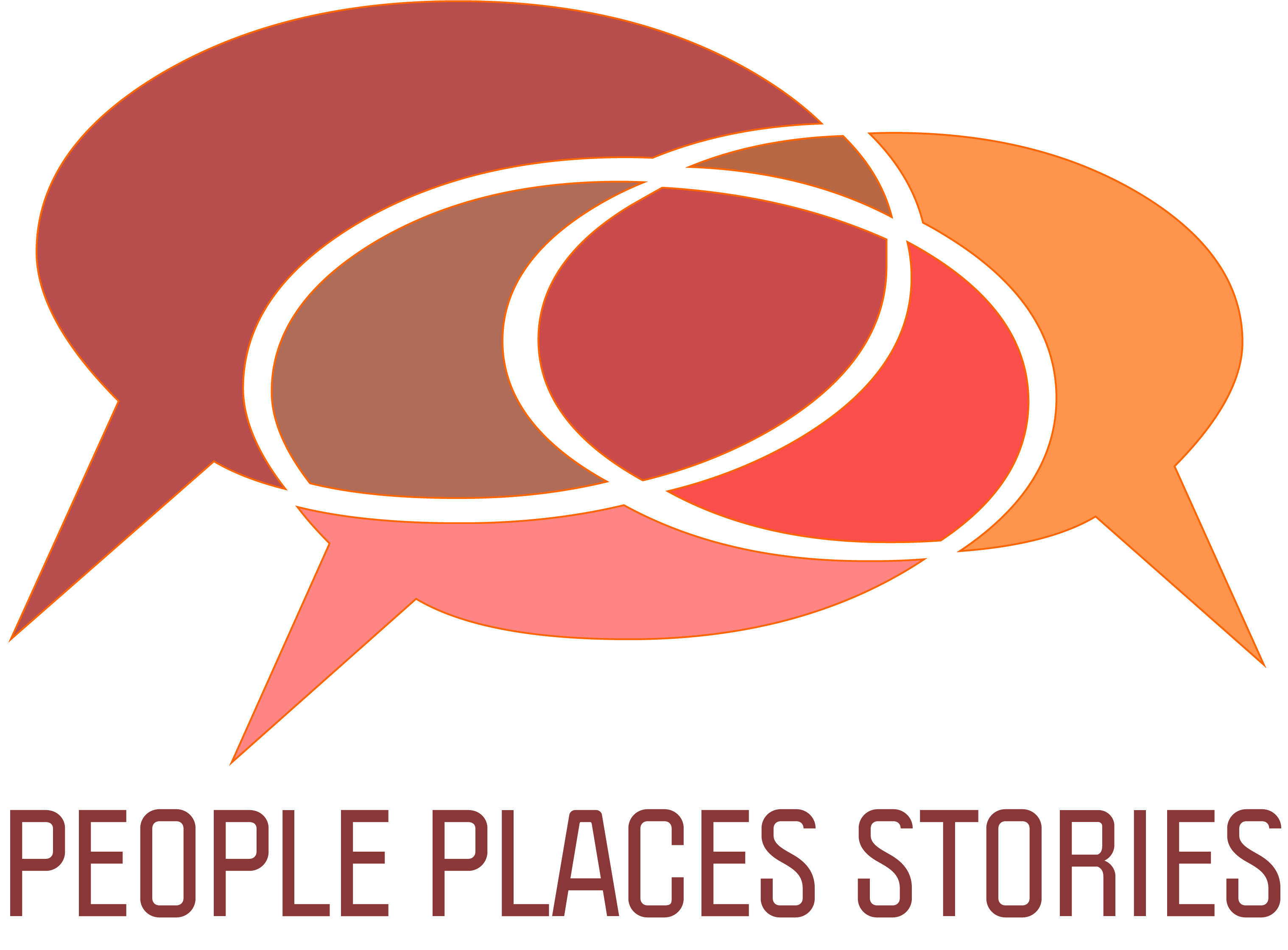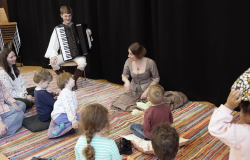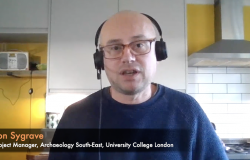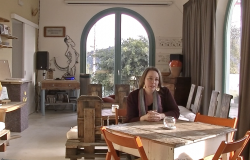Stage 5: Engage, Expand, be active
Goal: to activate and engage the stakeholders, to communicate with the (wider) community.
How do we activate the stakeholders? How do we attract attention and communicate/share the vision of the community? How do we make it exciting & inspiring?
Heritage Community Development Toolkit
- How Can You
- Partner’s Example
-
Activities
- Stage 5 @ the House Mill
- Learning Materials
- Quiz
- Competence Development
- Additional Resources
How can you help develop common place/asset-based narratives
A large part of cultural heritage is accessible only through its local community. Therefore, the recurring theme, presented in the orientative narrative (see stage 3) is the interpretative basis for the construction of place-based stories – by this community – relating to a variety of socio-cultural sectors & actions. These stories can take all forms from ‘simple’ oral storytelling to media and/or artistic expressions and socio-cultural events.
It is also the theme and approach for all communication with the ‘external world’: people from other territories & cultures. It is the creation of interpretative media about a community for other communities. They can take the form of Open Days, cultural events, art projects, public gardens, World Café, storytelling, story trails, hero stories, heritage walks and etc.
Monteleone di Puglia (IT)
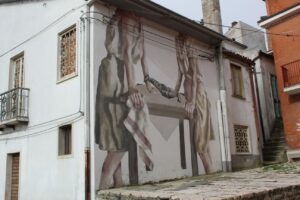
Monteleone di Puglia is a small village in the centre of the Italian Mezzogiorno. The village was economically depending on a traditional primary activity and suffered from substantial depopulation, significant ageing of the population and lack of public services.
In an attempt to change that situation, the local authorities, in cooperation with a team from the University of Salento, started a ‘rebranding’ process, based on the Placetelling® technique (2015 – 2019). A re-reading of the local history surfaced an historical event: “The Rebellion” (23rd August 1942) about a revolt of the local community against the fascist regime. 180 citizens were arrested and imprisoned. It was the start of many similar revolts of people and villages against the Mussolini regime.
This story was re-interpreted to todays’ situation and gave birth to the narrative of Monteleone as a village of acceptance, as a place and community of peace and non-violence. This narrative was the leitmotiv of a series of events and activities leading to a transformation of the village and its image to the external world:
- The transformation of the War Memorial Monument into a monument of peace: “La Guerra e’ Follia”.
- The opening of a reception centre for adult refugees and a second one for teenage refugees.
- During several years immigrant artists were invited and commissioned to create big mural paintings and graffiti art on the themes of democracy, immigration, peace.
- The village received the International Peace and Non-violence Award.
All this gave the village a new identity, a distinguished look and new energy for further work with a clear message.
Posible Activities
- apply storytelling techniques to invite people to tell about their relationship with local heritage.
- collect stories that are relevant for the community and the heritage.
- offer the community a variety of appropriate media for conveying/presenting a place-based story.
- apply storytelling techniques to help articulate/reveal common meanings and connections with the place/heritage.
- advocate for communities concerning the values they have for a heritage to a diverse range of audiences.
- help develop a well-structured narrative based on story material offered by people.
- choose and apply various ways of inspiring, committing, activating, and empowering people in various settings and contexts.
- assist communities in uncovering heritage in their own places.
- identify aspects of a heritage asset that may be considered as promising.
- make an inventory or network analysis of all relevant stakeholders.
- identify the potential benefits, incentives, challenges a heritage asset may offer to the network.
- develop a plan for reaching people, raise an interest, involve, and empower them in heritage community building.
- develop a viable plan for the development and exploitation.
- make it active & creative with: Open Days, events, art projects, garden, World Café, storytelling, story trails, hero stories, place telling, heritage walks …
- evaluate progress
- challenge stakeholders to develop ideas, organise design thinking meetings.
- develop scenarios including budget plans. Discuss viability and risks.
- provide examples of multiple views of heritage in the work with communities.
- assist heritage communities in discussing multiple views of the past
- involve a diverse range of communities in co-creating interpretation of heritage.
- assist communities in critically assessing the credibility of sources and in discerning evidence-based facts from presumptions and fiction.
Reflection:
- HM has both designated and public/open areas and interactive elements for different forms of community engagement. How have you utilised your heritage site for community engagement?
- Involving community member in the operation the HM through volunteering is part of the engagement strategy. What are the key elements of your engagement strategy/tactics? What are the challenges and opportunities you foresee in recruiting and/or engaging volunteers in your community?
related competence
- To help develop common place/asset-based narratives
- To (inter)connect, inspire, commit, activate, and empower people.
- To facilitate participatory governance and share responsibilities
- To moderate brainstorming, decision making, co-operating processes in the community
- To create ideas and opportunities, to manage resources, to make things happen (intrapreneurship)
- To establish (digital/on-line and real life) communication, meeting and cooperation structures and processes
Competence Development Pathway
PPS focuses on building the capacity of heritage communities as a socio-cultural space for creativity, learning, participation & inclusion. Each stage of heritage community development involves either field, organisational or social competences.
We have developed the “PPS Competences & Knowledge-Skills-Attitudes (KSA) reference systems” that will assist you to develop the relevant competence to this stage.
Examples
Crowdsourcing photographs to engage communities in appreciating and caring for their built heritage.
Collaborative app in which everyone can contribute to identify the signatures of architects, sculptors or contractors who have left their mark on buildings’ facades.
Mathilde Leclair – Saint Denis local council “The first motivation is to change the way we see our city and territory, to raise our eyes and look up : people could learn on their own about their region. We implemented a points system to motivate people: a participant can move from being “beginner” to “expert” based on the number of pictures he/she uploads. We observe that the playful way to do this is a success and competition can stimulate. Our aim is to increase awareness of the heritage’s richness: people have a role to play in its preservation. This project is useful because it identifies damage on buildings, hidden or repainted carved signatures. By participating in the knowledge of a territory people can help enormously with future research.”
https://patrimoine.seinesaintdenis.fr/En-quete-de-patrimoine-Qui-a-bati-le-Grand-Paris
Engaging communities in sustainable management of their towns and surroundings by encouraging them to document how they value their heritage.
A network of over 200 small towns with a remarkable heritage – the association runs projects and documents peoples views. Their work links people and their heritage to encourage sustainable development: local economies, tourism and territorial management. Their projects integrate cultural rights in small towns whose historic role of urban administrative centres has significantly changed.
Philippe Boisseleau “our staff carry out surveys and interviews with people concerning the relationships they have with identity and their town. Our expertise in processing this kind of data allows us to act as a relay for people. After making the first series of interviews, they show the results to people who then have a better understanding of the project ; they are more inclined to participate and it becomes a topic of conversation so that other people want to join. One successful aspect is therefore the possibility of restitution, and the materialisation of a place where people can have access to the data”.
The Digital Archive of the Romani Arts in Europe engages a wide range of actors in sharing Roma heritage and culture through its curated archive.
This makes arts and cultures of Roma visible, illustrating their contribution to European cultural history. Through narratives told by Roma themselves, RomArchive creates a reliable source of knowledge that is internationally accessible on the internet, thereby countering stereotypes and prejudices with facts. Roma are heavily involved in all the decision-making processes at RomArchive;the contents are compiled by minority representatives. The individuals involved in the project – including the assorted working groups this amounts to some 150 people from fifteen countries across Europe and beyond – form a global network of cultural practitioners and artists, scholars, theorists and activists, most of whom come from a Roma background.
Engaging people in the creation of a shared space for memory and social history through oral history.
A social history museum that centres storytelling and memories to include people in heritage interpretation of these remarkable houses. Built in the 1740s,14 Henrietta Street moved from grandeur to tenement over the 300 years of its existence. Bt collecting personal stories, memories, histories and experiences of the people who lived in 14 Henrietta Street and the tenement buildings of Dublin in the 19th and 20th centuries Dublin City Council involved people in the interpretation of the houses, and following its conservation and restoration included them in peeling back the layers of those who had been there before.
Involving local inhabitants in creating a shared vision for Venice’s mediaeval industrial heart.
Project run by Faro Venezia – An association that was formed to promote the Faro Convention in Venice. It provides a voice to the people of Venice concerning sustainable management of Venice’s heritage. It sends delegates to Faro related events, lobbies local national and european politicians, contributes to the European Heritage Day, runs Heritage Walks, social lab workshops, interviews and publications.
This project consulted inhabitants about their vision for the Venetian Arsenale – an area of central Venice which has been the heart of naval industry for over 800 years, this complex of shipyards and armories is clustered in the centre of the city but suffered decline during the 20th century. It is now the subject of proposals for redevelopment. Faro Venezia ran workshops resulting in presentations and publications on a sustainable shared vision for the area. (PDF HERE)
A collective space for sustainable heritage businesses in a small historic mountain town
A cooperative with 200 members from the town, who are interested in sustainable heritage based tourism in the mountainous town of Biccari in Puglia, Southern Italy. The coop is a model of social aggregation: a collective space where the community can express their needs, promote their work and find out about local heritage. Its provides a space for like-minded businesses such as guided walks, glamping, cycle tourism, archery and organises rural regeneration projects such as a voucher scheme for spending money locally, and a small rural life museum that works with schools and is open to visitors.
A number of groups met for sessions and were invited to curate and interactive digital museum using some of the objects and artefacts from the archive collection at Wessex Archaeology (a commercial archaeology company which carries out preventative archaeology).
